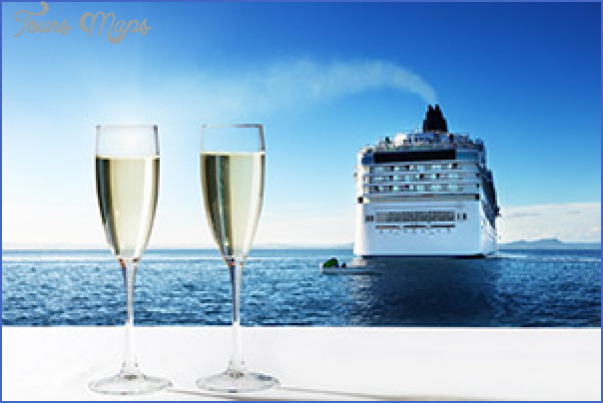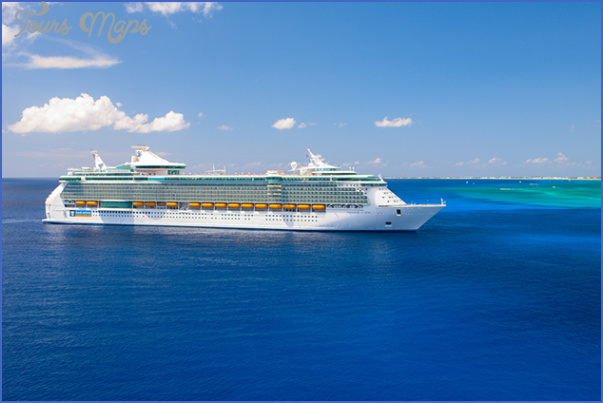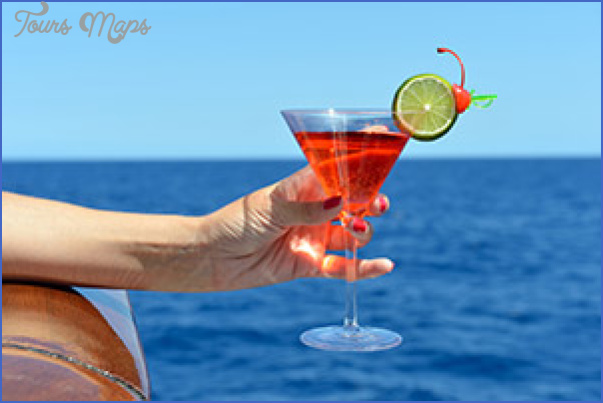While there are plenty of onboard expenses to contend with (at least on mainstream lines), these charges are made easier thanks to the fact that cruises operate on a cashless basis; all expenses are charged to your onboard account and settled at the end of the voyage, either by cash or credit card. When you check in for a large-ship cruise, either at the terminal or online, the cruise line will ask for a major credit card to charge your onboard expenses. They will typically preauthorize your account (through your credit card company) for $50 to $70 per person per day, an amount that is refunded if you don’t spend it. This will, however, reduce your available credit on your credit card, so ensure you have sufficient cushion for extra purchases.
On some ships, you must report to the purser’s office once on board to establish your onboard credit account. On all cruises, you also have the option of paying your account with credit or cash. If you want to establish your onboard account using cash only, you’ll be asked to put down an initial deposit, usually between $250 to $350 per person for a 1-week sailing. You should let the cruise line know as early as possible if you wish to pay with cash (some lines like to know at the time you make your cruise reservations).
Some lines will now let you establish your onboard account by linking it directly to your debit card, but we don’t recommend that course of action. Why? The same hold that would be placed on a credit card is placed on a debit card, but this time, it’s on your checking account and numerous preauthorizations can eat that up fast. It’s refunded to you if you don’t use it all, but that process can take up to 30 days depending on your financial institution.
Your keycard acts as your onboard charge card for the length of your cruise (along with opening your stateroom door). It will work for most everything bought on board, except for any gambling you do in the casino. On most ships, you can even put your crew tips on your credit card, though on some you’re expected to use cash (see p. 104 for more on tipping).
On most small ships, things aren’t so formal. Because there are so few passengers, and because the only places to spend money aboard are at the bar and the small gift counters, the staff will just mark down your purchases and you’ll settle your account at the end of the week.
In all cases, you will need some cash on hand for port stops: to pay for cabs, make small purchases, buy sodas and snacks, tip your tour guides, and so on. Having bills smaller than $20 is useful for these purposes (especially some $1 bills). Some ships have their own ATMs aboard, most often located, not surprisingly, in the casino or adjacent to the Guest Relations desk. These give out U.S. dollars, but typically involve a hefty convenience fee.
Tip: Guests from countries other than the United States should note that many cruise lines provide the option to be billed in U.S. Dollars or in their native currency. It’s a good policy to always state you want your onboard account to be charged in USD. Cruise lines use a financial service to do this, which charges you a conversion fee on top of the fees your bank will be charging you. It’s like paying a tax on a tax, and not generally worth it.
It’s recommended that you not leave large amounts of cash in your room All ships have some sort of safes available, either in-room or at the purser’s desk, and passengers are wise to use them You should also store your plane ticket and passport or ID papers there. Many cruise ships even have
Budgeting
Cruises, with the exception of a few luxury lines, are not all inclusive. Many pay extra for shore excursions (an average of $600 per person for a weeklong cruise) and tips ($11-$13 per passenger per day). You will also want to budget in the many tempting onboard extras: bar drinks, dry cleaning, phone calls, massage and other spa services, salon services, babysitting, photos taken by the ship’s photographer, wine at dinner, souvenirs, and costs for any other special splurges your particular ship might offer (items at the cigar bars, time on the golf simulator, and so on).
WHAT SHOULD YOU DO before you board?
Use this handy checklist for what to do before you leave home to ensure smooth sailing on your cruise.
MONEY MATTERS FOR YOUR CRUISE Photo Gallery
Maybe You Like Them Too
- STAR CLIPPERS CRUISES TRAVEL GUIDE
- JAMAICA CRUISES
- TRAVEL TO CABO SAN LUCAS CRUISES
- NORWEGIAN CRUISE LINE CRUISES TRAVEL GUIDE
- Passports & Identification FOR CRUISE TRAVEL










